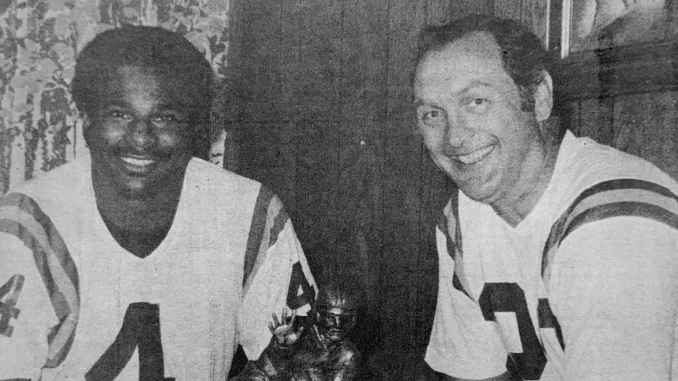
GLENN GUILBEAU, Tiger Rag Editor
When Tiger Rag Magazine dawned on Sept. 1, 1978, naturally Billy Cannon was on the cover in his No. 20 LSU jersey with his 1959 Heisman Trophy.
But there was someone else in the picture next to the Heisman and Cannon in a No. 4 LSU jersey – Charles Alexander, who went into his senior season that year as a Heisman favorite.
On Saturday when No. 3 LSU (2-0) hosts 1-1 Florida (6:30 p.m., ABC), Alexander will be next to the late, great Cannon (No. 20), once again, this time on the south end zone facade of Tiger Stadium. There, his No. 4 will be unveiled at halftime as an official retired number along with his LSU running backs coach and 1962 Heisman runner-up tailback Jerry Stovall (No. 21) and three-time All-American cornerback Tommy Casanova (No. 37).
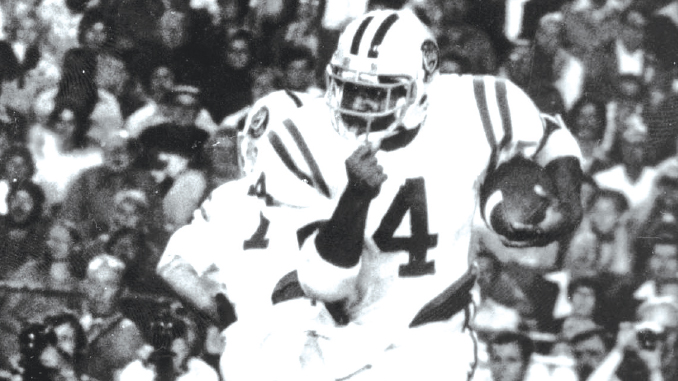
“I’m truly humbled by this,” Alexander said recently. “Playing those four years, I never dreamed that one day my jersey would be retired and be on display in Tiger Stadium.”
Alexander, whom then LSU head coach Charles McClendon and Stovall signed out of Ball High in Galveston, Texas, in 1975 over Texas A&M, Texas or Houston, was the second highest finishing junior for the Heisman in 1977 in ninth right behind Michigan quarterback Rick Leach. Texas’ Earl Campbell won it that year.
Halftime this Saturday for LSU vs. Florida. Charles Alexander's name will permanently be displayed inside Tiger Stadium! pic.twitter.com/ao4g1roZFQ
— LSU Football (@LSUfootball) September 10, 2025
In ’77, Alexander gained a Southeastern Conference record 1,686 yards (still No. 9 today) for the 8-4 Tigers on an SEC record 311 attempts (No. 7 today). He put up a school record 237 yards against Oregon and hit 100 yards in 10 games with a pair of 200-yard games that year. He gained an incredible 1,110 yards in six of his last seven games alone with the 237 vs. Oregon, 110 against No. 2 Alabama, 136 vs. Mississippi State, 199 at Tulane, 231 against Wyoming and 197 against Stanford in the Sun Bowl.
With just a year as a starter after backing up Terry Robiskie in 1975 and ’76, Alexander was already an LSU Legend.
“He’s just as good as Earl Campbell,” Wyoming coach Bill Lewis said at the time. “I coached against Campbell for three years (as an Arkansas assistant), and know all about him.”
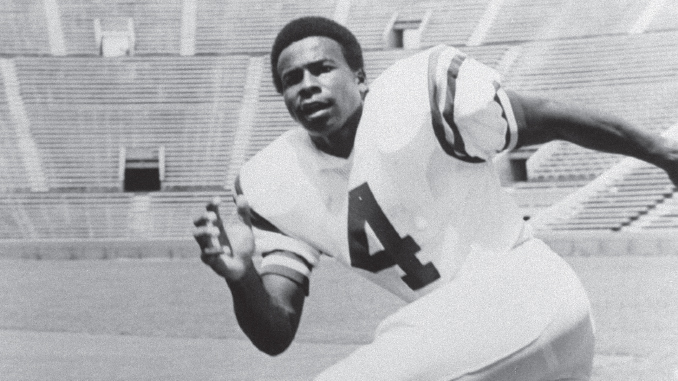
Alabama coach Bear Bryant was not used to opponents cracking 100 yards on him.
“I hope he wins the Heisman, because he deserves it. But not at the expense of running over Alabama,” Bryant said before the 1978 season.
“Alexander is probably the greatest running back in the history of the SEC,” Gainesville Sun sports editor Jack Hairston wrote at the time.
“He can be the best ever,” Stovall, an LSU superstar tailback back like Cannon, said in that Tiger Rag. “He’ll keep improving. He’s doing unbelievable things. If he has a 300-yard game, it shouldn’t surprise anyone.”
Alexander was a chiseled 6-foot-1 and 213 pounds going into the 1978 season. He ran over people and had track speed.
“I remember a simple run up the middle in a game in 1977,” said 1979 All-SEC first team center John Ed Bradley to Tiger Rag in a recent interview. “I went up on the nose guard and stood him up, and Charles just came and plowed and hit me from behind. He hit the hole so hard, and he was gone. He just pulled past the linebackers like they were in cement. He was extraordinary. He was just in a different league.”
Alexander could have ran track at LSU. NFL scouts noticed that at a Pro Day at LSU in 1978.
“He ran two 40-yard dashes in 4.36,” McClendon said in that 1978 Tiger Rag. “The pros couldn’t believe it. So, they checked to make sure he was running 40 yards. I think Charlie surprised himself, being as big as he is, to run that fast. The yards Charlie gained last year is unbelievable because of the few long runs he had.”
Alexander started the 1978 season on fire with 144 yards against Indiana, 123 vs. Wake Forest, 144 at Rice and 156 at Florida for his ninth straight 100-yard game in a 34-21 win as No. 11 LSU went to 4-0.
But Alexander was held to 81 yards or lower in four of his next five games that included losses to Georgia, No. 3 and eventual national champion Alabama and Mississippi State. And he fell out of the Heisman race as the Tigers dipped to 8-4. Alexander finished fifth in the voting behind Leach in third with Oklahoma tailback Billy Sims winning it with 1,762 yards on 231 carries (7.6-yard average) for the 11-1 Sooners.
Alexander finished with 1,305 yards on 305 carries (4.2 average).
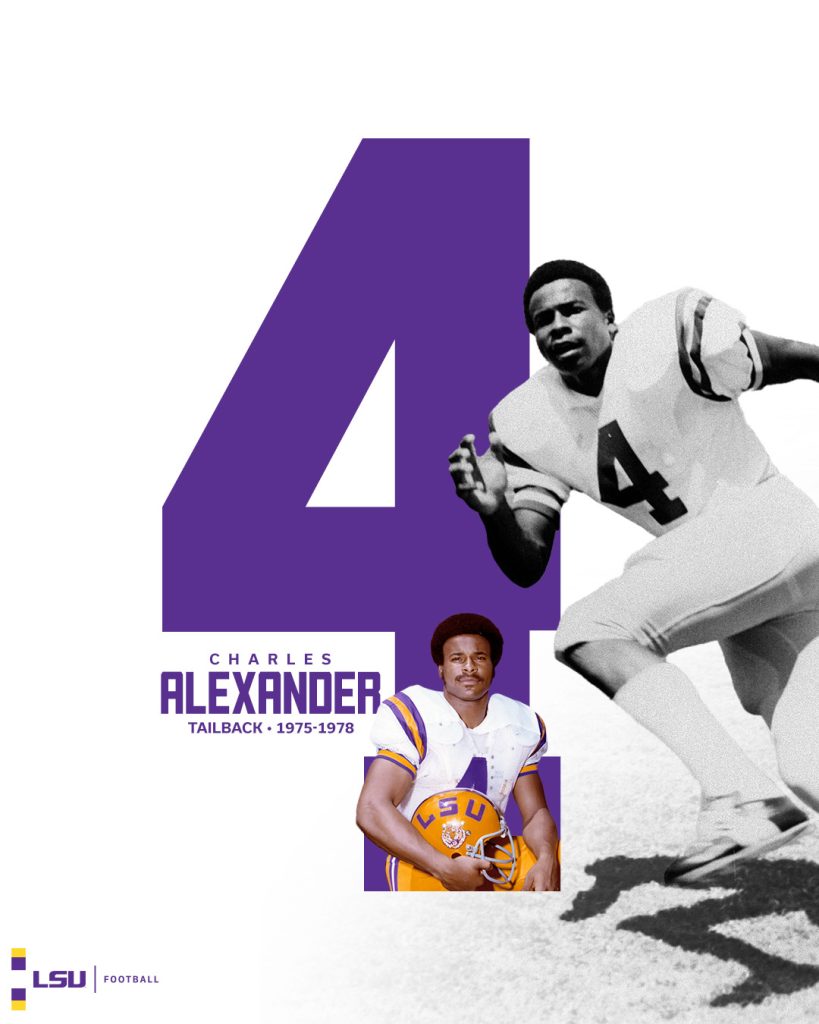
“I thought he was the best in the SEC and the country,” said Bradley, who went on to become a sportswriter for the Washington Post and Sports Illustrated as well as a successful novelist and non-fiction writer.
“He was so special to the program. He carried us,” Bradley said. “The guy was amazing. He was incredibly ripped. Just so impressive physically. It was just natural to him.”
One could hear Alexander coming from a distance, like Cannon.
“I mean he was just unlike anybody,” Bradley said. “I always thought Billy Cannon, then Charles Alexander. They were just that kind of talent.”
Dave McCarthy, who was LSU’s offensive line coach from 1963-66 and from 1967-79, told Bradley he once watched Cannon at a track meet.
“He said he could hear his feet hitting the ground like thunder,” Bradley said. “He said Charles was like that, too. They both had that kind of great – that generational great. You just know when they’re among you.”
Alexander was the first 4,000-yard rusher in SEC history as he reached 4,035, despite being a backup his first two seasons with 301 yards on 108 carries as a freshman in 1975 and 876 yards on 155 rushes in 1976. He stood atop the SEC in career yards and attempts (855) and held the SEC’s season best rushing mark of 1,686 from 1977 until Herschel Walker hit Georgia from 1980-82.
Then Bo Jackson followed at Auburn from 1982-85. Each won the Heisman – Walker in 1982, Jackson in 1985. Georgia won the national championship in 1981 with Walker gaining 1,891 yards, which remains third in SEC history. And he is the SEC’s only 5,000-yard rusher at 5,259 in four seasons as a starter.
Auburn contended for the national title in 1984 went to the Cotton Bowl in the 1985 season as Jackson gained 1,786 yards, which remains eighth in SEC history. Jackson stands fifth in the SEC in career rushing with 4,303 yards in four seasons as a starter.
“Charlie was that kind of player, like Herschel and Bo,” Bradley said. “It bothers me sometimes that he’s not mentioned along with them as one of the top backs of that time, because he was definitely equal to those.”
Alexander, who went in the first round as the 12th pick of the NFL Draft to Cincinnati in 1979 and played for seven seasons, played his last game at LSU 47 years ago. But he remains No. 3 in career rushing behind Kevin Faulk (4,557 from 1995-98) and Dalton Hilliard (4,050 from 1982-85).
“To get that phone call that my jersey would be retired is something I will never forget. It’s truly an honor and one of my proudest moments,” Alexander said.
Bradley wonders about one thing, though.
“Why didn’t this happen many years before?,” he asked. “But I’m glad they’re doing this. It’s important to remember those special ones like him.”

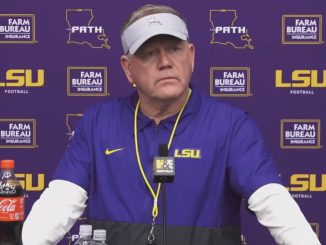
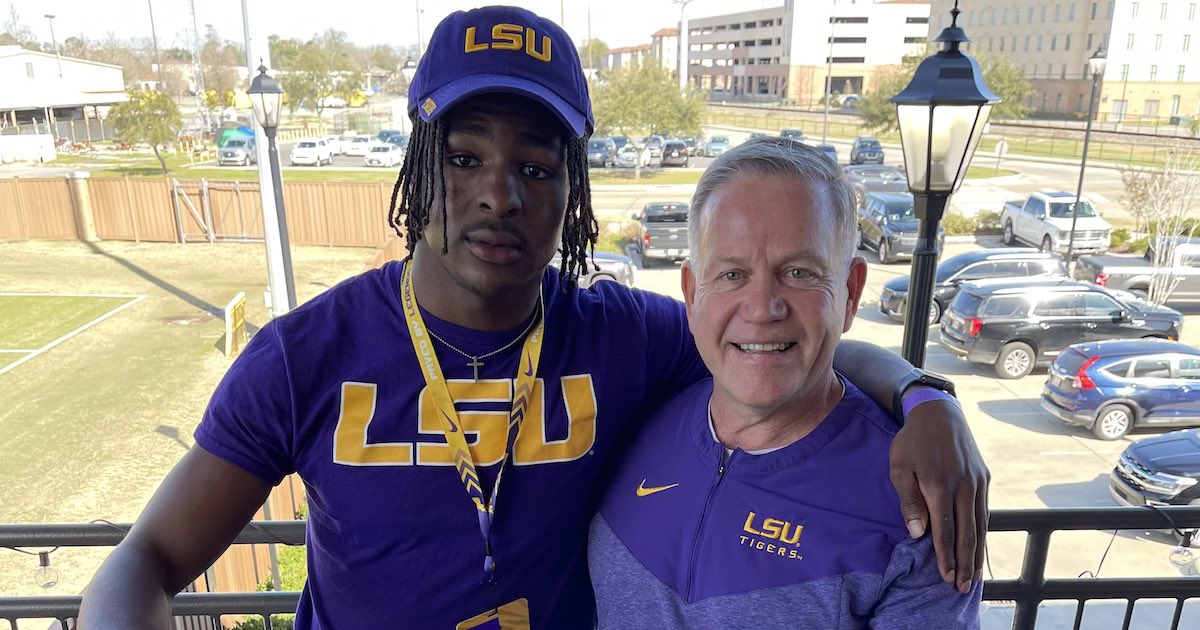

Be the first to comment